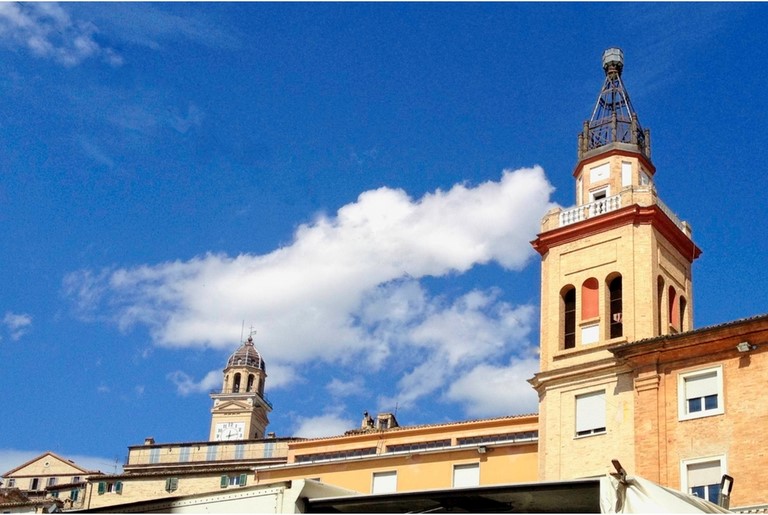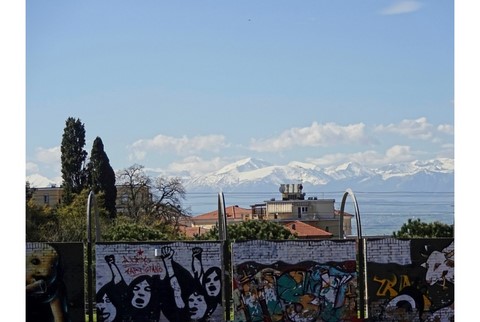Macerata - Sights and History
Sights

- Piazza della Libertà: The Piazza della Libertà is the central square of Macerata. Here you will find the imposing town hall, which impresses with its Renaissance architecture. The clock tower, a landmark of the city, rises majestically above the square. The Church of San Paolo adds further architectural beauty to the square with its Baroque façade. The University Palace and a box complete the impressive ensemble.
- Sferisterio Arena: The Sferisterio Arena is a unique open-air opera stage known for its impressive acoustics and architecture. Renowned opera productions are staged here in summer, attracting visitors from all over the world.
- Cathedral: Macerata Cathedral, also known as the Cattedrale di Santa Maria Assunta, is a magnificent sacred building. It captivates with its baroque façade and its impressive interior with ornate decorations and paintings.
- Musei Civici di Palazzo Buonaccorsi: The Museo Civico di Palazzo Buonaccorsi is an important museum housed in a historic palace. It houses a diverse collection of artworks, including paintings, sculptures and archaeological finds, which offer an insight into the history and culture of the region.
- Palazzo dei Diamanti: The Palazzo dei Diamanti is a magnificent Renaissance building known for its unique façade with diamond-shaped stones. Today, the palace houses various cultural institutions and exhibitions.
- City wall and city gates: Macerata still has parts of its historic city wall, which characterise the cityscape. Along the wall you can enjoy the charming atmosphere of the city on a walk. In addition, the city gates such as Porta Mercato and Porta Montanaio are interesting architectural elements that recall the history of Macerata.
History

Normally, the origin of Macerata is traced back to the Roman city of Helvia Recina, which developed from a previous Italic city of the Piceni, possibly dating back to the 3rd century B.C. The remains of the Roman theatre from the 2nd century A.D. are today the most important evidence of the ancient city and testify to the prosperity of the settlement. In the 4th or 5th century, the Goths forced most of Recina's inhabitants to retreat to the hills, where the medieval centres of Macerata and Recanati were founded.
In 1320, Pope John XII's decision to make Macerata an episcopal see led to a growth in the city's population and increased political importance due to its allegiance to the Papal States.
The 16th century was the golden age of the city. Urban life was characterised by a flourishing political and economic level. Work on the city walls was completed and the central square was remodelled. The century ended with a completely changed city, both in terms of building fabric and urban design, and above all the city grew significantly and the Accademia dei Catenati was founded.
At the end of the 18th century, the Napoleonic army occupied the Marches and Macerata. This event led to great enthusiasm among many citizens who had already adhered to Enlightenment thoughts and now saw their ideas of justice and freedom realised. After some time, the enthusiasm turned into the opposite due to the suppression of religious orders and high tax burdens. In 1799, the population revolted and forced the Napoleonic troops to flee. However, they returned stronger and conquered the city after five days of fierce fighting.
In the 19th century, many Maceratesi took part in Italy's independence struggles. In 1860, over 99% of the votes were cast to leave the Papal States and join the Kingdom of Italy.